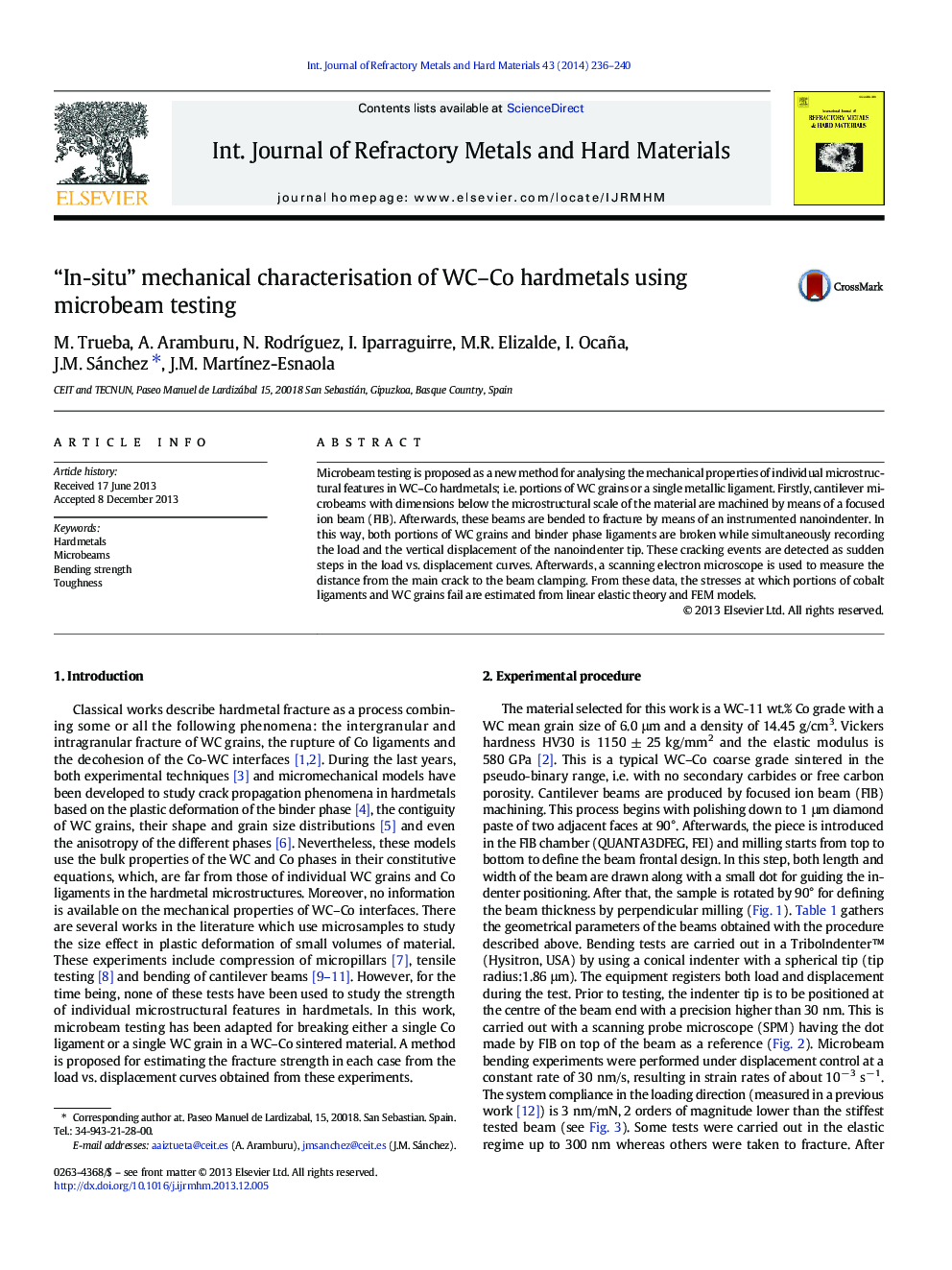| Article ID | Journal | Published Year | Pages | File Type |
|---|---|---|---|---|
| 1603258 | International Journal of Refractory Metals and Hard Materials | 2014 | 5 Pages |
•Single WC grains and Co ligaments have been broken by using the microbeam testing technique.•Cracking events are detected as sudden steps in the load vs. displacement curves.•Scanning electron microscopy is used to measure the distance from the main crack to the beam clamping.•The fracture stress of each microstructural feature is estimated from these data using FEM models.
Microbeam testing is proposed as a new method for analysing the mechanical properties of individual microstructural features in WC–Co hardmetals; i.e. portions of WC grains or a single metallic ligament. Firstly, cantilever microbeams with dimensions below the microstructural scale of the material are machined by means of a focused ion beam (FIB). Afterwards, these beams are bended to fracture by means of an instrumented nanoindenter. In this way, both portions of WC grains and binder phase ligaments are broken while simultaneously recording the load and the vertical displacement of the nanoindenter tip. These cracking events are detected as sudden steps in the load vs. displacement curves. Afterwards, a scanning electron microscope is used to measure the distance from the main crack to the beam clamping. From these data, the stresses at which portions of cobalt ligaments and WC grains fail are estimated from linear elastic theory and FEM models.
Graphical abstractFigure optionsDownload full-size imageDownload as PowerPoint slide
